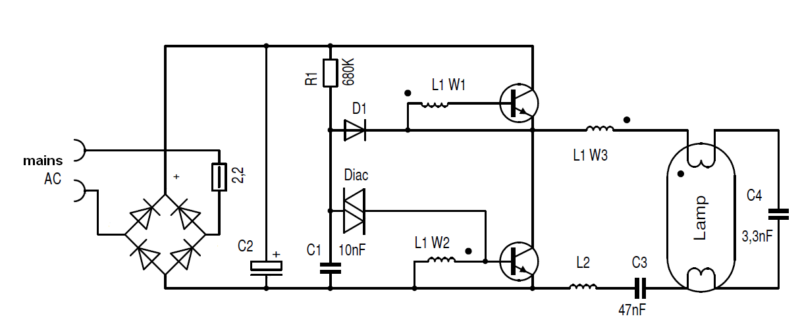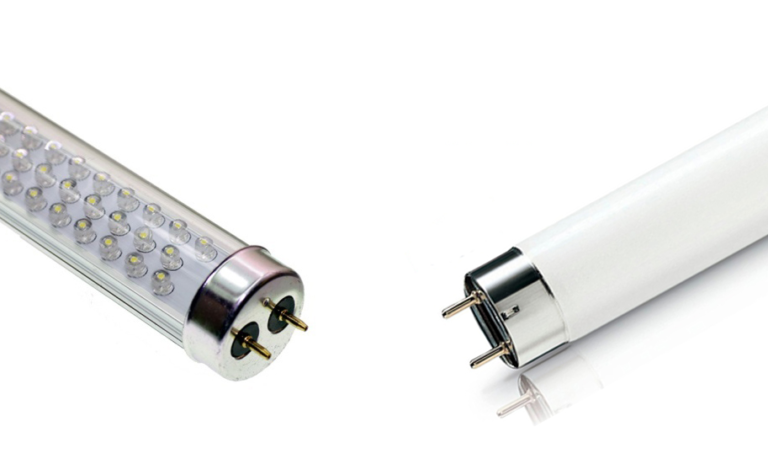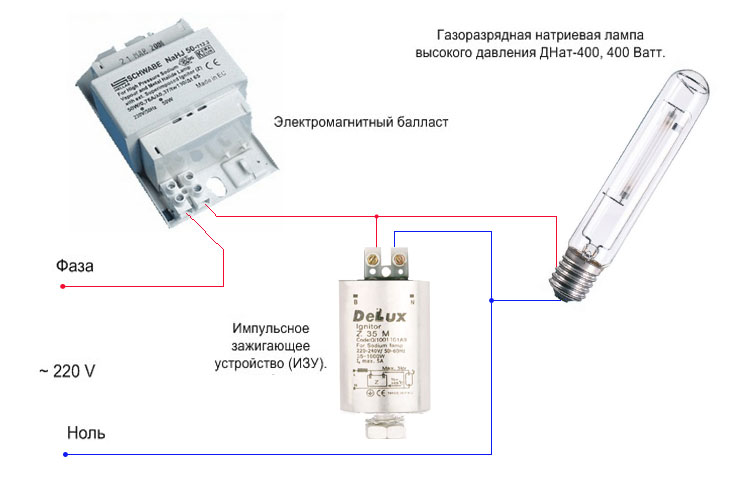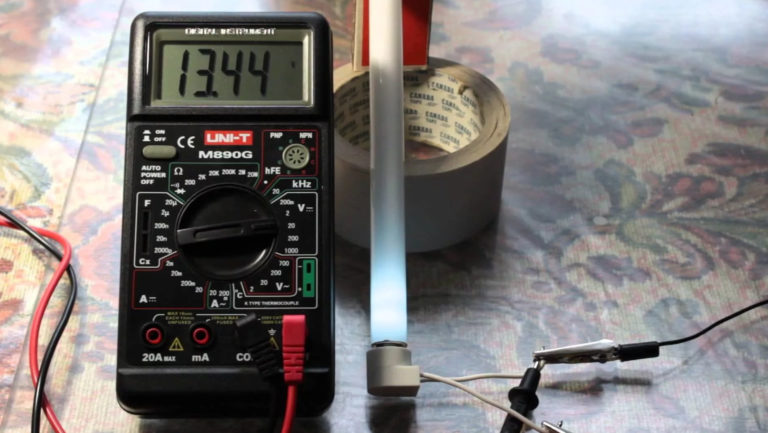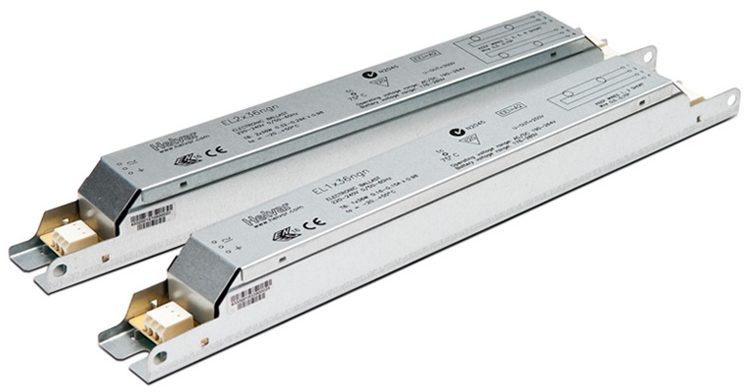Features of a choke for fluorescent bulbs
All fluorescent lamps have a current-limiting element in their construction: the choke, or ballast. It stabilizes the network from uncontrolled rise of values, excluding pulsations.
What is a choke
A choke is an inductance coil (to be precise in the terms, in this case an inductive coil) placed on a ferromagnetic core (usually made of a magnetically soft alloy). This coil, like any conductor, has an ohmic resistance as well as an inductive reactance, which appears in AC circuits. The design of the choke (ballast) is such that the reactive resistance prevails over the active resistance. The entire structure is placed in a housing made of metal or plastic.

Classification of chokes
В fluorescent lamps chokes of the electronic or electromagnetic type (ECM) are used. Both types have their own characteristics.
The electromagnetic choke is a coil with a metal core and a winding of copper or aluminum wire. The diameter of the wire affects the functionality of the luminaire. The model is quite reliable, but power losses of up to 50% call into question its efficiency.
Lamps with electromagnetic chokes are cheap and do not require special adjustment before use. But they are sensitive to voltage fluctuations and even minor fluctuations can lead to flickering or unpleasant humming.
Electromagnetic designs are not synchronized with the mains frequency. This results in flashes just before the lamp ignites. The flashes do not practically interfere with the comfortable use of the lamp, but they negatively affect the ballast.
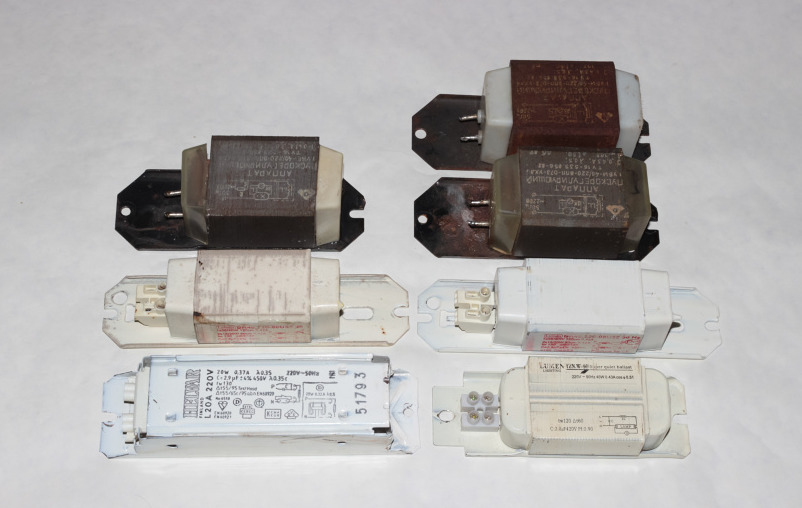
The imperfection of electromagnetic technology and the considerable loss of power when they are used leads to the replacement of such devices by electronic ballasts.
Electronic chokes are structurally more complex and include:
- A filter to eliminate electromagnetic interference. Effectively dampens all unwanted vibrations of the environment and the lamp itself.
- A device for changing the power factor. Controls the phase shift of the AC current.
- Smoothing filter to reduce AC ripple in the system.
- Inverter. Converts direct current into alternating current.
- Ballast. Induction coil that suppresses unwanted disturbances and continuously adjusts the brightness of the glow.
Sometimes in today's EBS You can find built-in overvoltage protection.
What is it for
Any inductor has the function of a series resistor. However, unlike a conventional resistor, it provides better filtration without AC ripple or appliance hum.
Two power configurations are used in today's technology: capacitor and choke. In the first case, the choke is not necessary for the voltage supply, but as an additional filter it is unmatched.
How to choose the electromagnetic choke
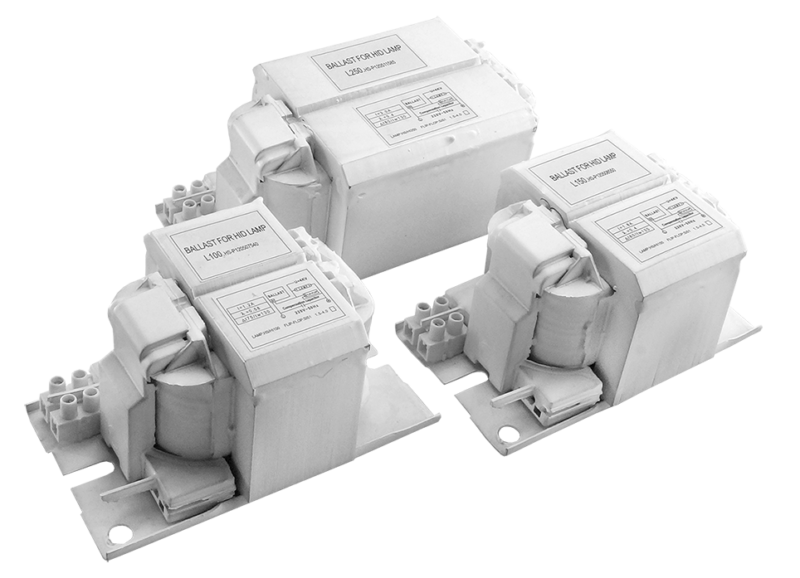
When selecting the electromagnetic choke, pay attention to the parameters:
- Operating voltage. Standard home power systems require devices rated 220 to 240 V with a frequency of 50 Hz.
- Power. Must match the wattage of the lamp. If two or more lamps must be connected, the power of the choke must match the sum of their powers.
- Current. The allowable current is indicated in amps on the chassis.
- Power Factor. It is desirable to select devices with the maximum values of the parameter. For ECGs, it usually does not exceed 0.5, so an additional capacitor will be required.
- Operating temperature. The range of ambient and choke temperatures at which all elements will remain serviceable.
- Energy efficiency. Defined by class according to the accepted grading. Medium B1 and B2 grades are typical for ECGs.
- Capacitor parameters. Operating voltage and capacitance of the capacitor, which is connected in parallel to the mains supply.
How lamps are started and run
The fluorescent lamp, unlike a conventional lamp, is not directly plugged into the mains. This is due to its construction and principle of operation.

To ignite it, you have to:
- ensure the emission of electrons from the cathodes, made in the form of filaments;
- ionize the interelectrode gap filled with mercury vapor by means of a high-voltage pulse.
The lamp will then continue to operate until the power supply is removed by the arc discharge between the electrodes. In the home position the power switch is open and the starter contacts are also open.

At the first moment, after applying voltage to the circuit, a small current (in the range of 50 mA) flows through the circuit choke - filament of lamp 1 - glow discharge in the starter bulb - filament of lamp 2. This small current heats and closes the starter contacts, and the current flows through the filament, heating it and creating electron emission.

This current is limited by the resistance of the choke. Without this limitation, the filaments will burn out from the overcurrent.

After the starter contacts have cooled, they open. By breaking a circuit with high inductance a voltage pulse (up to 1000 volts) is generated which ionizes the discharge gap between the two filaments of the lamp. A current begins to flow through the ionized gas, which causes the mercury vapor to glow. This glow initiates the ignition of the phosphor. This current is also limited by the complex resistance of the starter. And the starter has no effect on the further operation of the luminaire.
It is obvious that the starter plays an important role in the operation of the lamp:
- limits the current when the lamp filaments are heated;
- forms the ignition pulse of high voltage;
- Limits the gas discharge current.
To perform these functions, the ballast must be sufficiently inductive to generate the reactive resistance to alternating current and to generate the high-voltage pulse through the phenomenon of self-induction.
In some cases the starter cannot light the gas in the lamp bulb the first time and repeats the current injection procedure about 5-6 times. In this case there is a blinking effect when switching on.
A choke helps to get rid of this effect. It turns the AC low-frequency voltage of the household network into DC, and then inverts it back into AC, but already at a high frequency and the ripple disappears.
Wiring diagram for the lamp
The wiring diagram is simple: a circuit with a choke and a lamp connected in series. The system is connected to 220 V mains at 50 Hz. The choke acts as a voltage corrector and stabilizer.
Throttle failures and their diagnosis
Fluorescent lamps sometimes fail. The reasons are different: from factory defect to improper operation. In some cases repairs can be done on your own with your own hands and simple tools.
Recommended for viewing: Repairing the electronic ballast of a fluorescent lamp
Before repair It is necessary to accurately identify the breakdown unit. To do this, the lamp and all associated hardware will have to be disassembled.
The tools needed are:
- A set of screwdrivers with fully insulated handles;
- assembly knife;
- wire cutters;
- pliers;
- multimeter;
- indicator screwdriver;
- A roll of copper wire (0.75 to 1.5 mm²).
In addition you may need a new starter, a serviceable lamp or a choke. It all depends on which component has failed.
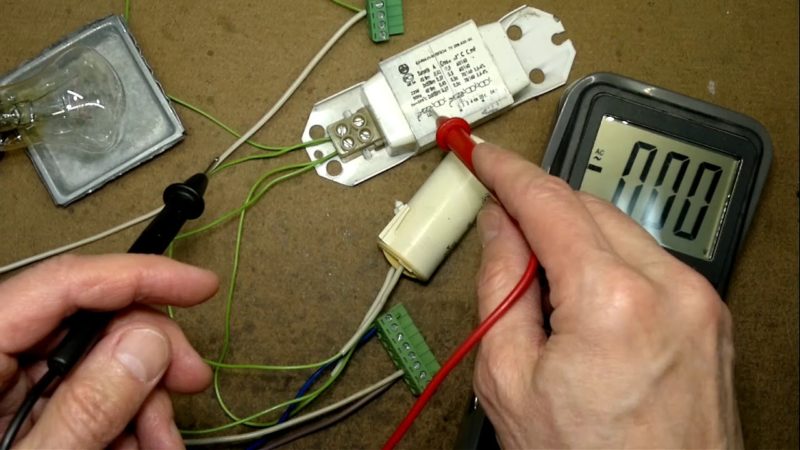
The most common problems:
- The lamp does not turn on and does not respond to the starter. The cause can be in any of the elements, so you need to change first the starter, then the lamp, at the same time checking the functionality of the circuit. If it did not help, then the problem is in the throttle.
- The presence of a small discharge in the bulb in the form of a snake indicates an uncontrolled increase in current. The cause of the fault is definitely in the choke, which must be replaced. Otherwise, the lamp will quickly burn out.
- Ripples and flickers during operation. Replace the bulb in series first bulband then the starter. More often the culprit is the choke, which stops to stabilize the voltage.
Normally, a faulty throttle can be repaired by replacing it. However, if you want, you can disassemble the element and try to restore performance. This requires a serious knowledge of electrical engineering and a lot of time. Given the small cost of a new choke, it is not feasible.
